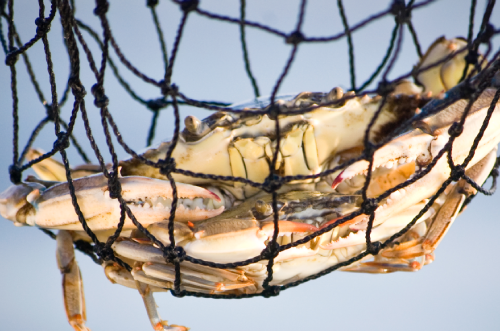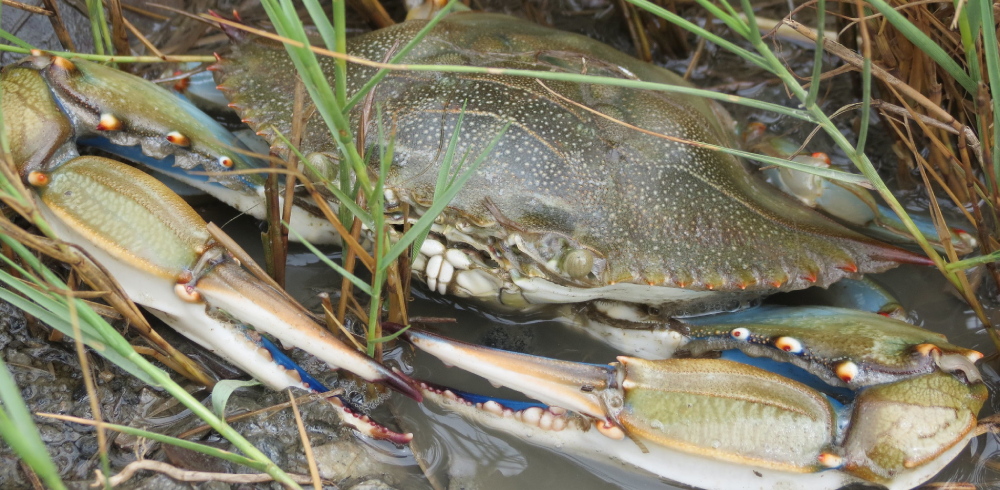Welcome back to the marsh!
Blue crabs are one of the most important invertebrates in the Chesapeake Bay watershed, to humans at least! They certainly live up to their scientific name of Callinectes sapidus, or beautiful tasty swimmer, and can be found throughout all brackish rivers, bays, tidal creeks, and estuaries from the Elizabeth River in the south to Baltimore in the north. Crabs may be seen swimming sideways near the surface of the water or walking around on the bottom looking for small fish or a convenient dead meal.

Local watermen have been crabbing for centuries by placing crab pots with smelly bait in them to attract these delicious scavengers. For a time, over-fishing was a problem and limits on the amount-harvested had to be placed. The recent 2021 Blue Crab Advisory Report is good news for the Chesapeake Bay’s blue crab population. It is still considered to be healthy—not being overfished or depleted. The winter dredge survey found that the population of female blue crabs had actually increased to 158 million from 141 million in 2020.
The study also states
“While this year’s population of female blue crabs is considered healthy, the overall blue crab population in the Bay (including males and juveniles) is low and reflects a declining pattern over the past two years. The overall population fell from 405 million in 2020 to 282 million in 2021. The population of male blue crabs (ages 1+) was estimated to be 39 million in 2021, down from 79 million in 2020. There are more regulations in place to protect females since they are the ones producing the next generation of crabs.
The 2021 Blue Crab Advisory Report recommends that researchers explore environmental factors that may contribute to the highly variable nature of the blue crab population, as well as implement programs to track the recreational and commercial harvest more accurately.”
In addition to overfishing, water quality is a real issue that blue crabs face. Large anoxic (no oxygen) “dead zones” can remove vast areas of previously suitable habitat. You can help blue crabs right from your own backyard, by pledging to be a River Hero Home or installing a living shoreline.

